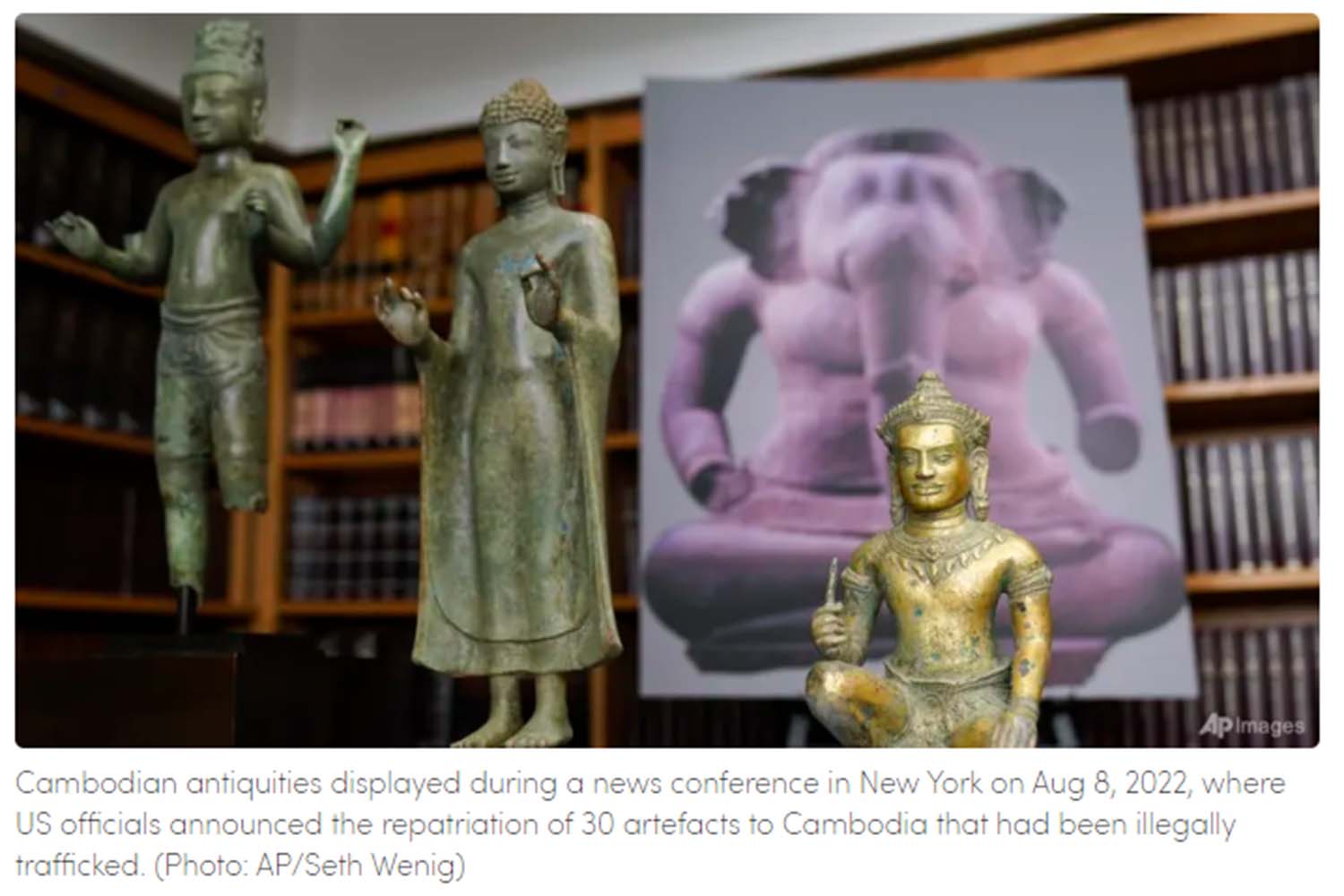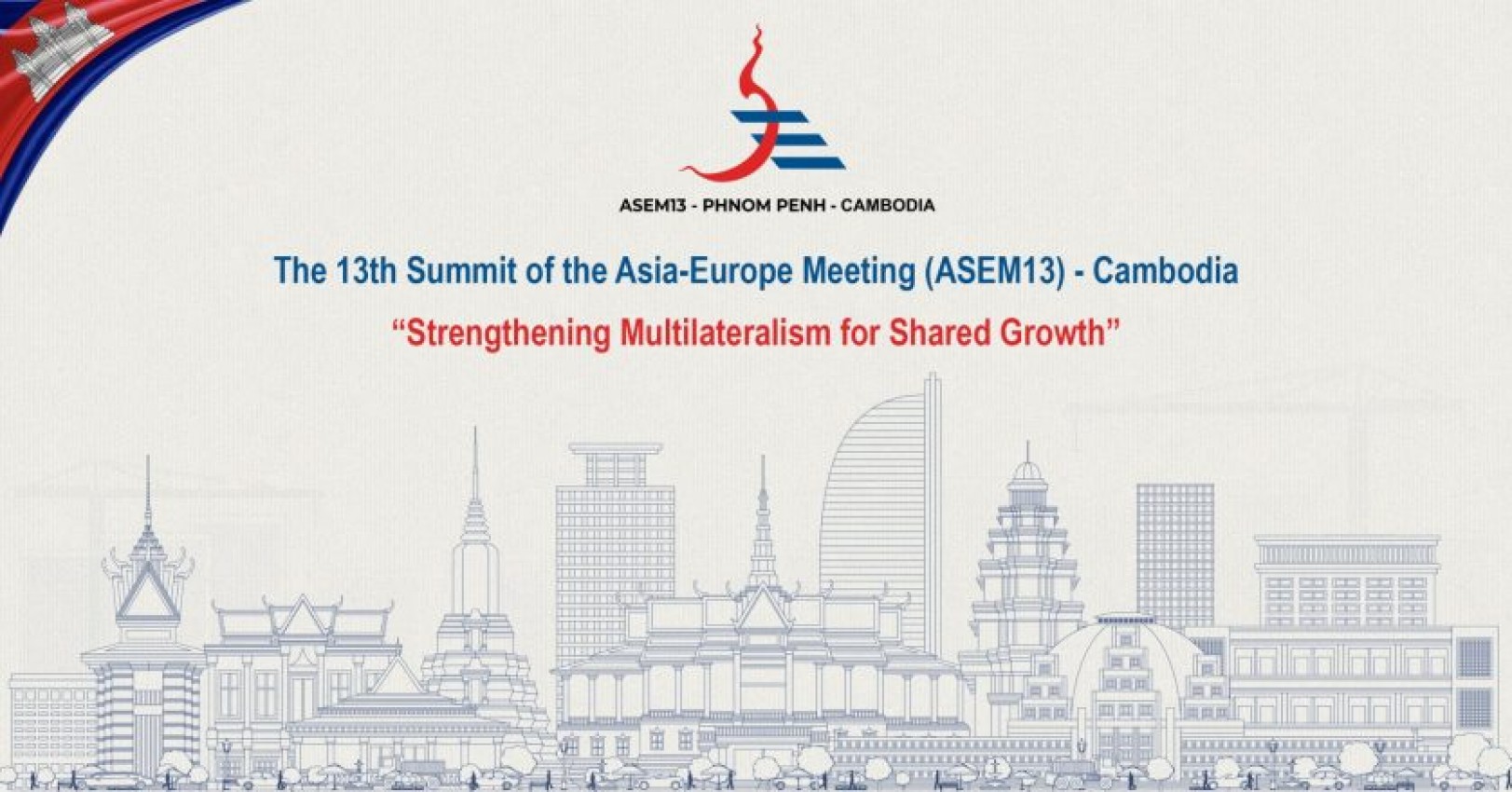SINGAPORE: A Cambodian team on a global quest to hunt down and retrieve scores of what it says are lost national artifacts is turning its attention closer to home.
Singapore, Japan, Korea and Taiwan are slated as future stops after a recently concluded mission to the United Kingdom to examine more than 100 Cambodian antiquities, some of which the delegation believes to be stolen.
Members of the team - which includes government officials, archaeologists, historians and conservators - told CNA on Tuesday (Oct 18) that they expect to open discussions with Singapore's Asian Civilizations Museum (ACM) soon but did not specify a date.
The Cambodian restitution team is keen to view the ACM's Cambodian collection, which according to online heritage portal roots.sg contains 136 items.
"We're taking a position that all these museums are very likely not to have any proper export license documents, and that many of them are sitting on stolen antiquities," said the team's head and legal adviser Bradley Gordon.
"There's lots of space for collaboration with Singapore ... I could see ACM being a great partner. So I think we need to have that dialogue."
"MASSIVE HEIST"
Museums, auction houses and private collectors are facing intensifying calls to return valuable artefacts to Asian and African nations, among others, who say the items were nicked from them by criminal or unethical means.
On 30 September, cultural ministers from 150 countries at a United Nations conference committed to improving efforts to return historical treasures to their countries of origin.
Cambodia, in particular, suffered widespread looting of archaeological sites during civil conflicts between the 1960s and 1990s.
This was a "massive heist" involving restorers, academics and in some cases around the world, museum curators themselves, said Mr Gordon.
Several precious items are believed to have passed through the hands of notorious late art dealer Douglas Latchford, who created fake documents to smuggle and sell them to Western buyers.
Cambodia's government has since sought to repatriate purportedly stolen antiquities sold on the international market.
Its restitution team has a developing database of more than 2,000 objects outside of Cambodia - and all of them must be attributed to the Southeast Asian country, said members, even if some can continue to be loaned out.
In August, the United States said it would return 30 looted antiquities to Cambodia - including statues of Buddhist and Hindu deities carved more than 1,000 years ago.
MISSION IN BRITAIN
This year, Cambodia also appealed to the UK government to help recover what it described as important cultural treasures which had "wrongfully" ended up in institutions such as the Victoria and Albert Museum and the British Museum, both located in London.
The two museums - along with the Ashmolean Museum in Oxford and Fitzwilliam Museum in Cambridge - hosted the Cambodian restitution team from September to October, to varying degrees of receptivity, members told CNA.
While the Victoria and Albert Museum provided full, "unfettered" access to its Cambodian collection and relevant personnel and materials, the British Museum was "difficult to deal with" and provided only minimal or redacted documents, said the team.
At the Ashmolean, provenance records handed to the team turned out to be empty envelopes with a few photographs, and the museum cited confidentiality reasons, said Mr Gordon.
“Some museums could be more collaborative," said researcher and team member Sonetra Seng. "They know that they hold our treasures illegally. We don't want any dispute, but only to get back what belongs to our nation and our people."
The team managed to inspect 140 objects across the museums and is now reviewing the data before submitting formal requests to the institutions.
"We have not concluded yet how many are stolen items, but we presumed many of the objects we viewed were illegally removed from Cambodia," said Mr Gordon.
"In due course (we) expect to start discussing repatriations, loan arrangements, and opportunities for training and collaboration."
LET THE SOULS RETURN HOME
The Cambodian restitution team told CNA how its ongoing campaign has unearthed an enormous amount of documents including invoices, receipts and email correspondences.
"We believe in the future we will see greater success in recovering stolen antiquities," they said in emailed comments.
"Right now, the priority is to find out where everything is located ... The core principle here is to return to a people their heritage."
An archaeologist on the team, Ms Sopheap Meas, told the BBC in May that the lost Cambodian artefacts - many of which have sustained damage over the years, with pieces broken off - were more than just stones.
To Cambodians, a statue for example can hold the soul of a king, god or ancestor - thus a sculpture with a missing leg is akin to a real limb being severed.
Senior researcher Soklida Tek echoed these sentiments, telling CNA this week that every statue made by their ancestors was a living Cambodian treasure.
"(Museums) should not store our kings, ancestors and gods, with broken heads and broken torsos, all locked away ... This is bad luck," she said.
"Let them go free and find their bodies and heads to come home and reside once again in Cambodia, their motherland.”
(SOURCE: CNA)
























